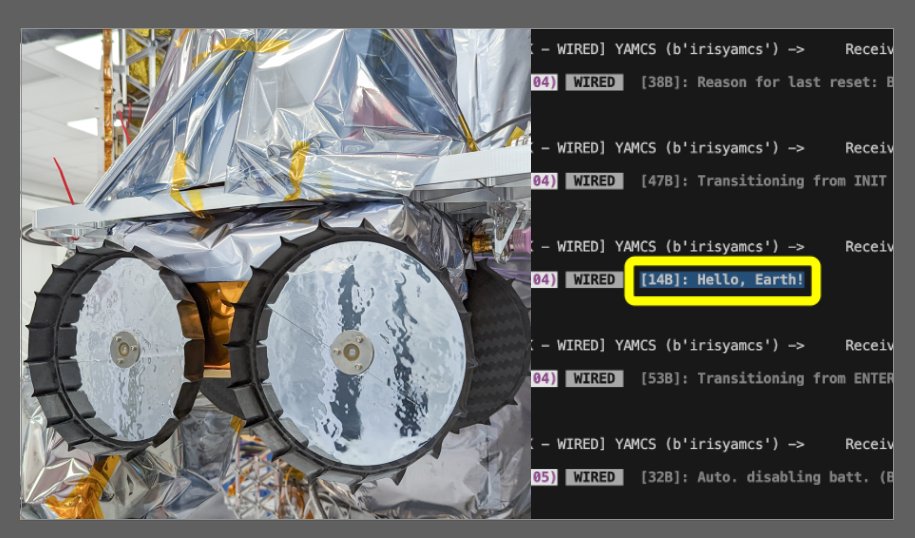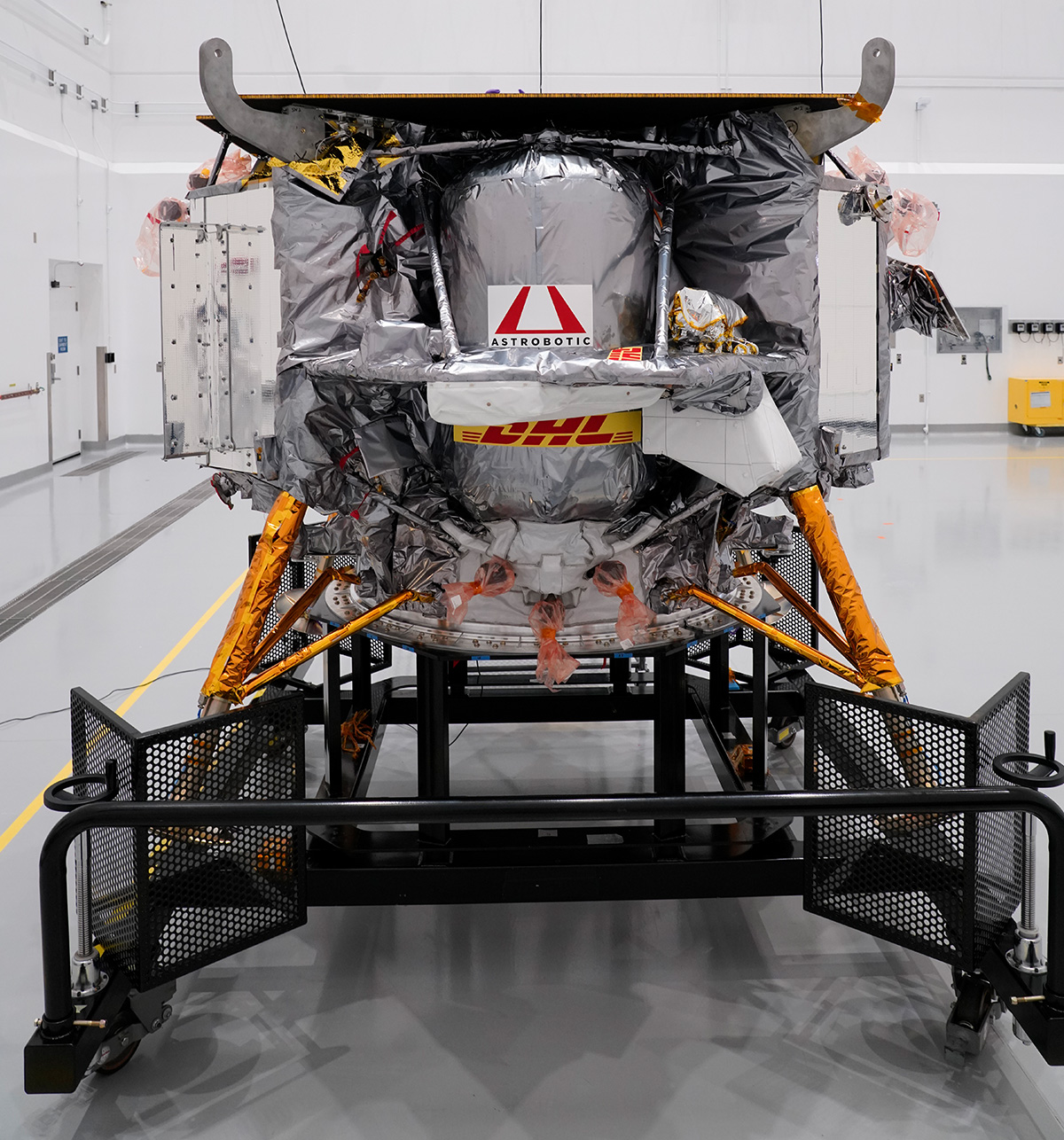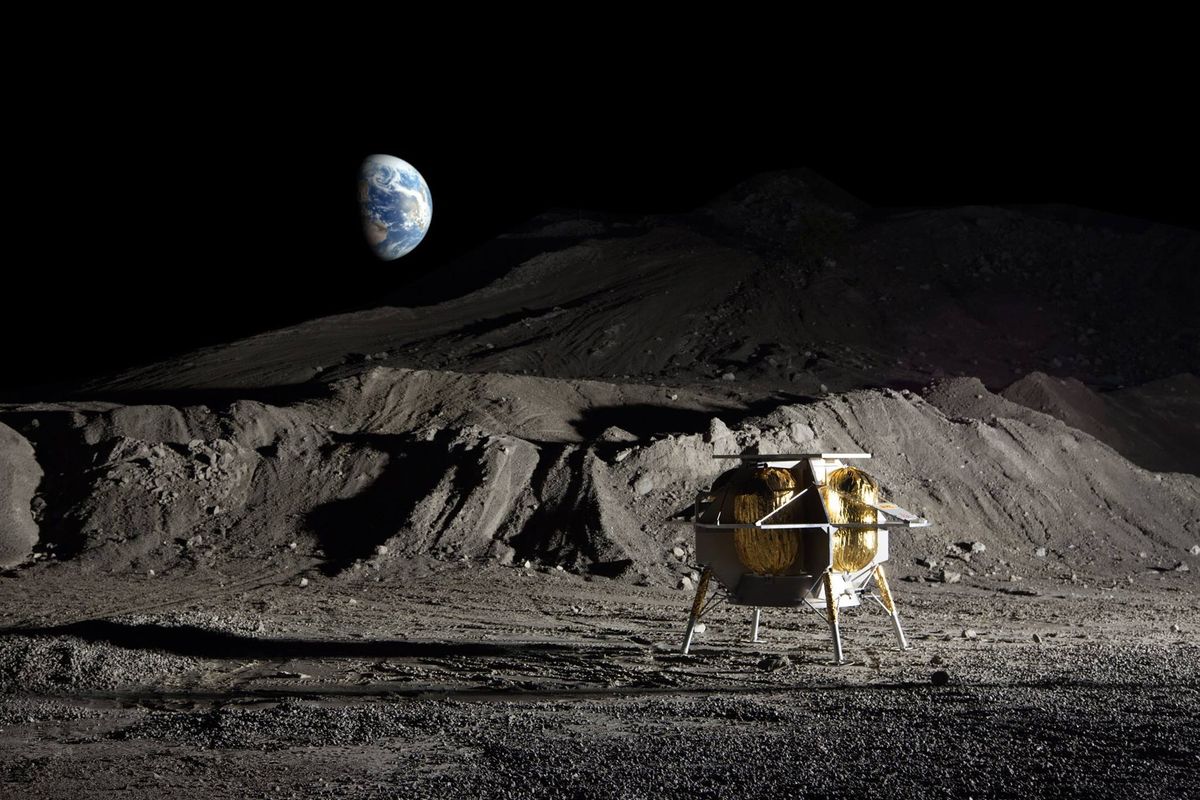Unfortunately, the Astrobotic lander will not be able to perform a soft landing on the surface of the Moon. But you can also find positive aspects in everything. The Peregrine spacecraft continues to move towards the Moon and performs scientific research on the way to its impossible goal. Also, its onboard payload has been successfully activated and is ready for operation.

Astrobotic reported that it has successfully activated 10 vehicles that are part of the payload on board Peregrine and received data from nine designed to communicate with the lander.

Among the activated instruments: a swarm of five tiny robots from the Mexican Space Agency, a German-designed M-42 radiation detector, and Astrobotic’s own Optical Precision Autonomous Landing sensor. Carnegie Mellon University’s Iris rover also successfully activated and sent a message from space: “Hello, Earth!”
NASA’s “Awakened” cargo
Four payloads belonging to NASA were also activated: NSS (Neutron Spectrometer System), LETS (Linear Energy Transfer Spectrometer), PITMS (Peregrine Ion Trap Mass Spectrometer) and NIRVSS (Near Infrared Volatile Spectrometer System). It is encouraging that two of them — NSS and LETS — have already begun to measure various components of the radiation environment in the interplanetary space around the Earth and the Moon.
The German-built M-42 radiation detector is also designed to measure and analyze the level of cosmic radiation during a flight to the Moon to assess the safety and feasibility of future lunar missions with human participation. It is also designed to transmit data to Earth, but we are still waiting to confirm whether the M-42 has succeeded in doing so.
The reason for the failure of Peregrine

Peregrine launched on Monday on a Vulcan Centaur rocket from the United Launch Alliance. The 1.2-ton spacecraft was activated and even contacted via NASA’s Deep Space Network. But soon after, Peregrine’s trip to the moon proved unfeasible. The lander began to lose fuel at a critical rate, which forced Astrobotic to abandon any chance that the lunar vehicle would be able to descend to the Moon’s surface at all. The company believes that the cause of the anomaly in the spacecraft was a faulty valve.
Despite the fuel leak, the lunar rover has been operating for almost four days. Astrobotic updates Peregrine status information almost daily, as the rate of fuel leakage in space has unexpectedly slowed down, probably due to a decrease in pressure.
Damaged but indestructible
The spacecraft is located at a distance of about 362 thousand kilometers from Earth. Peregrine continues to move along its usual trajectory on its way to the moon. At this time, Astrobotic and payload providers are collecting valuable data that will be used in future missions.
Astrobotic hoped to become the first commercial company to conquer the surface of the Moon. Unfortunately, Peregrine was not destined to land on our natural moon. Nevertheless, the perseverance of the spacecraft allows us to obtain valuable data for Astrobotic and other companies involved in the mission and demonstrate that their vehicles are capable of operating in space.
Sending a spacecraft to the Moon is not easy. I commend @Astrobotic's hard work, resilience, and commitment as they navigate the challenges facing their mission. With any breakthrough innovation comes rewards and risks. Each lunar endeavor expands the opportunities for us to… https://t.co/zmZD8qj0P1
— Dr. Nicky Fox (@NASAScienceAA) January 11, 2024
Earlier, we reported on how the doomed Peregrine sent a selfie on the way to the moon.
According to gizmodo.com
Follow us on Twitter to get the most interesting space news in time
https://twitter.com/ust_magazine


